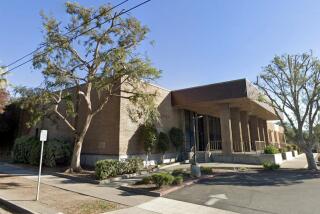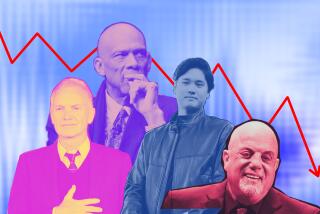Check Fraud Forces a Change in Habits
- Share via
“When It Comes to Check Fraud, Banks Have the Balance of Power” [Personal Finance, May 14] reminded me of a situation that happened to my wife and me in 1996.
Our bank was Cal Fed. Cal Fed doesn’t return the original check, but sends a copy of the front of canceled checks with the statement. When I reviewed the copy, I noticed that one of the checks had been altered. All of the writing appeared to have been deleted and had been reentered with all of the same information as before, but the payee had been changed to a mail-order house in Seattle. The check was originally written to the bank that has our Visa account, and was for more than $3,200. It was cashed at a local Wells Fargo bank.
We immediately went to Cal Fed. It promptly removed the debit and called the bank with the Visa account. We then immediately sent a replacement check for the Visa bill.
I am writing this to you for two reasons: We feel that Cal Fed was very cooperative in this matter, and we don’t know how the check was stolen, but we have changed our habits regarding mailing checks. Since this occurred, we always put any envelopes with checks in them in the post office’s internal mail drop.
ROBERT M. PARKS
Northridge
*
I can commiserate with Michael Keesling because we experienced a similar problem with our business checking account.
Our firm issued a check to my partner. He endorsed the check, making it payable to his brokerage account, and mailed it. The deposit never reached the brokerage firm. Later we found the check included in our bank statement, having been processed by Union Bank of California.
We examined the canceled check and determined that part of the endorsement had been altered. The check had been fraudulently deposited into an account at Bank of America.
We contacted Union Bank. It sent us to Bank of America. The loop-de-loop runaround started at that point.
Being CPAs, we understood what was happening. We went to Union Bank and politely explained that our “contractual arrangement” is with Union Bank and not with Bank of America. We demanded that Union Bank put the money back into our business account. Reluctantly, Union Bank redeposited the funds.
Three months later, we received correspondence from Bank of America indicating that its depositor had done nothing wrong. Bank of America’s fraud unit told my partner that he could not take a check written to him and write a restrictive endorsement. He was told that a restrictive endorsement is the same as an “endorsement in blank.” Therefore, it was Bank of America’s position that “anyone” could cash the check.
During our conversation with the Bank of America “fraud expert,” it became very clear that he had no idea of what he was talking about. We politely ended the telephone call.
Here’s the bottom line to the problem: A bank requires an account holder to fill out account identification cards and signature cards, for a good reason. A bank has a fiduciary responsibility to its account holder.
The bank is supposed to verify the customer’s signature and determine that the endorsement is proper before funds are disbursed. These procedures are designed to protect against fraudulent activities. These procedures are put in place to protect the customer and to help the bank meet its fiduciary responsibilities.
The problem that Mr. Keesling (and we as well) experienced is that banks do not comply with their own internal control procedures. The cost of complying with fiduciary requirements is simply too high. This is a business decision by the banks, nothing more.
RICHARD E. LILLIE
Palm Springs
More to Read
Inside the business of entertainment
The Wide Shot brings you news, analysis and insights on everything from streaming wars to production — and what it all means for the future.
You may occasionally receive promotional content from the Los Angeles Times.









